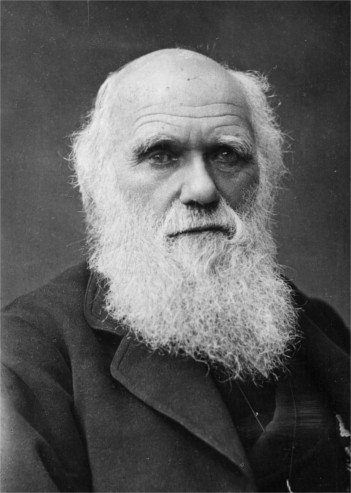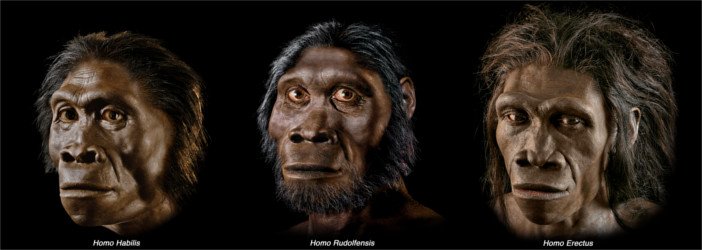Evolution Is Not Chance
This is a view of great antiquity and was particularly arrestingly explicated in 1802 by William Paley in his book “Natural Theology”. His was a version of the “Argument from Design” which seeks to show that such complexity could only have been created by design and, thus, was proof of the existence of a designer identified as God. This argument has been updated considerably since Paley and its latest formulation, “Intelligent Design” has proved very influential with some religious groups. The Argument from Design was conceived, first and foremost, as a proof of the existence of God and the fact that, if sound, it also explains the complexity and diversity of life was originally almost incidental.

When Darwin’s “Origin of Species” (1859) offered an alternative explanation for exactly the same phenomena it constituted a major challenge to the Argument from Design. Proponents of evolution were accused of espousing atheism which was seen as an inevitable consequence of rejecting the Argument from Design. This was, and is, an overreaction.To reject deliberate design in favour of evolution in the specific context of the complexity and diversity of organisms does not necessitate also rejecting a belief in God. The Argument from Design is but one argument for the existence of God and many religious people are perfectly comfortable to believe in God and accept evolution. Despite this, supporters of Creationism, seeing Evolution as a challenge to the belief in the existence of God, have run a vigorous campaign in an attempt to discredit it.
One argument, often used, is to point to the fact that organisms do indeed appear to be designed, and the claim is made that the simplest explanation for this (Occam’s Razor is sometimes appealed to) is that they were designed. This is set against random genetic mutation which, it is asserted, amounts to claiming that all the organism’s in the world came to be by pure chance. They rightly point out that such a claim is nonsense and, if evolutionists were indeed arguing this, Creationists would have a knock-down point.
So where, if anywhere, have they gone wrong?
The alternative to Creationism is not chance and no rational person has ever argued that it is. Whilst genetic mutations are random they are acted upon by natural selection which divides the wheat from the chaff. Natural selection favours organisms (and genes) which are best fitted to the environment that they happen to find themselves in and is therefore the driving force of evolution.When Darwin was grappling with the problem of diversity he marshalled an enormous amount of data to support his evolutionary solution and he was able to describe the effects of the mechanism, but he was unable to uncover the mechanism itself, because the technology and knowledge of micro-biology were simply not available at the time.
This had to wait until the mid-twentieth century when the structure of DNA was discovered, and the process of understanding it began. There is still a huge amount that isn’t known about DNA, but there’s enough to establish a firm basis for evolution. Genetics is a very complex field and I will not presume to try to explain it all here. What I will do is touch upon the areas which are most relevant to my theme although, even then, I certainly run the risk of being accused of gross over-simplification.

DNA is a molecule, usually to be found in a double-helix structure, made up of four acids (guanine, adenine, thymine, cytosine) held together with a backbone of sugars and phosphates. It is contained in the nucleus of every living cell. Organised in strands called chromosomes, DNA provides the encoded instructions, or genes, for the form the organism will take be it amoeba, flea or human. A vast amount of the chromosomes in all living organisms is identical and completely interchangeable which suggests a common ascendancy. The differences in chromosomes indicate how close the relationship is, be it between brother and sister, or giraffe and geranium. Most, but not all, kinds of organisms are split between males and females. The sperm of the male and the ova of the female contains one strand of DNA which, on fertilisation, join together to form a double-helix structure which is then repeated in all the cells of their off-spring as they divide and multiply. Hence the progeny inherits 50% of its genetic material from mum and 50% from dad.
So genetic characteristics are inherited, but how does genetic change occur?
DNA passes on its genetic information through the generations very accurately indeed and mutations are extremely rare – but they do happen. When they occur they may have a profound impact on the destiny of an individual, population or even species or they may have no impact at all. Geneticists can identify many mutations which have occurred and can use this knowledge to determine relatedness, differentiate between species and, quite often, pinpoint the reasons for various illnesses.

A mutation may be beneficial, neutral or harmful with most coming within the latter two categories. If a mutation is harmful to the organism it will have an adverse effect on its survival and the organism is likely to disappear from nature and the mutation from the gene pool. Neutral mutations will have no effect one way or the other and will therefore have no impact on survival at the time although, as will be explained, that may change with circumstances. Beneficial mutations, whilst in the minority, will tend to help the organism survive and reproduce and will, therefore, tend to spread in the gene pool. If a gene proves beneficial enough then, over time, it will become very common. A gene may also spread in the gene pool through a mechanism called random drift but I will not get into this here.
Returning to neutral mutations – these may become harmful or beneficial depending on how the environment changes. If they become harmful they will disappear from the gene pool but, if beneficial, they are likely to spread in the gene pool.
A particular mutation, once established in the gene pool, may run the gamut between beneficial, neutral and harmful. A genetic predisposition to retain salt is very beneficial in hot environments for example, but can lead to heart problems in more temperate zones, without offering any benefit. In other circumstances it may offer neither benefit nor harm.
Environments change over time for numerous reasons but, if this change is gradual, species will tend to maintain fittedness to that environment and the gene pool will remain stable. This does not mean that no mutation or evolution happens but merely that it occurs in an orderly and fairly gradual fashion. Sometimes, however, environments can change drastically causing mass extinctions. The most well known example of this is the extinction event which ended the reign of the dinosaurs 65 million years ago. Sudden environment change leading to mass extinction will shuffle the genetic pack on which natural selection acts and, at such times, new species are likely to evolve or, at least, change their niche in the environment. Carnivores can become herbivores or vice-versa. The end of the reign of the dinosaurs allowed mammals, hitherto small, timid and retiring, to expand into all those niches left vacant by their unfortunate predecessors. Over thousands of years or, in some cases, much more rapidly than this, new species are likely to be the result.
A mass extinction event is a pretty drastic way to generate new species, but there are somewhat more sedate ways in which this can occur. People often talk of a “missing link” between species, between humans and chimpanzees for example, and the lack of so called “links” or “intermediates” is often cited by Creationists as a major hole in the evolutionists’ argument. Even palaeontologists have sometimes been hung up over missing links and the need to find them but, it turns out, they were a pursuing red herring.

If a population of any species is sharing a reasonably stable environment and stays there it will be likely to remain recognisably the same species over time. If beneficial mutations occur they are likely to spread through the population and, consequently, be shared by the population as a whole. A particularly dramatic mutation or a combination of mutations will, however, lead to the population evolving but, the point is, as a whole population. There will be no individual who can be identified as the source of change and any changes that occur will be invisible from one generation to the next and can only be perceived if dozens or perhaps hundreds of generations are observed. Rats will begat rats will begat rats.
If a population is particularly fitted to its stable environment then, whilst mutations will still occur at a constant rate, most which are not harmful will remain neutral or will be offset by other mutations. In these circumstances a species will appear not to be subject to evolution- a point which some Creationists like to labour with erroneous glee. A good example of this is the shark. Whilst there are in fact a number of species, from dogfish to hammerhead, the basic shark pattern has remained so well adapted to its environment that it has changed very little for millions of years. A big shame we humans are pushing them towards extinction!
Sometimes, however, a population can experience a schism where, fairly rapidly, it can actually become two distinct species. This has been happening for millions of years and is a main reason for diversity. What happens is that a population of a single species gets divided in such a way that they can no longer interbreed. The kind of things that might happen are an earthquake or volcano or a flood dividing the environment permanently, or at least for a long period, which makes communication across the divide impossible. One population is now two and, since no genetic material can pass between the populations, they now have distinct gene pools or, as geneticists put it, live on different genetic islands. The Galapagos archipelago and Australia and their fauna and flora are beautiful examples of genetic and literal islands. Divergent evolution between the two populations will continue and, given time, if the groups came in to contact again, they would be recognisably different and would no longer be capable of interbreeding. So we see two populations ploughing their distinct evolutionary furrows with no missing link between them.
As I hope I have shown, evolution is far from being a random process and provides a very satisfying explanation of the diversity or species and also their uncanny fittedness to the environments in which they live. It is also a decidedly beautiful and, as a conception, is something that offers a much more worthy gift from a creative deity than the Creationist alternative could ever be.
Feature Image Credit
